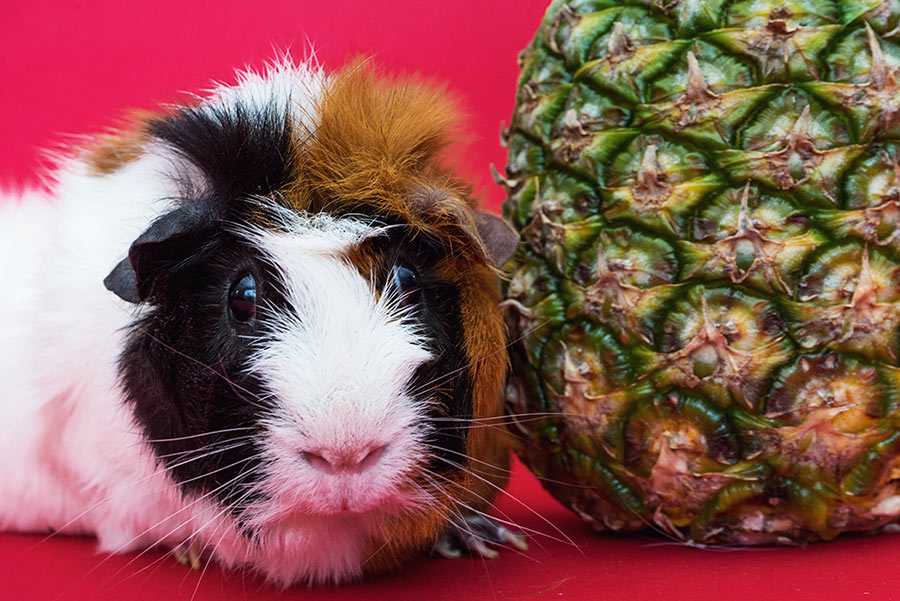
Although pets can have food allergies just like people do, they can’t tell us if they feel itchy or unwell. Pet owners need to be on the lookout for allergic reactions to food and prevent them from happening. Pet foods are often prone to induce allergic reactions as the food production is sub-par to human nutrition and may include ingredients not specified on the label. Thankfully, the Human Grade pet food label can help pet owners identify foods that are made to the highest standards. Owners will know exactly what their pet will be eating, reducing the risk of causing any food allergy.
Why Do Food Allergies Occur?
Although the terms “food intolerance” and “food allergies” are often confused, they stand for two different reactions a digestive system may have to food.
- Food intolerance is caused by the inability of the body to digest a particular food. For example, some dogs can’t digest dairy items because of their lack of milk digesting enzyme, called lactase, making them lactose intolerant.
- Food allergies are the response of the immune system to a protein from a specific food. Instead of identifying the food as a harmless source of nutrition, an animal’s immune system recognizes the protein as a foreign invader. It initiates an immune response to fight against it. This immune response can range from minor (itchy skin, sneezing, etc.) to anaphylaxis, a severe allergic reaction that can be fatal.
Although some food allergies may appear on the first exposure to a food, most allergies occur after repeatedly consuming a particular food. Each time a pet eats the food item, its body builds an immune response. At some point, the immune response becomes so strong that an allergic reaction develops. However, with pet food, it may be a challenge to isolate what caused the allergy because of the mixed ingredients in regular pet food.
Common Food Allergy Symptoms in Cats and Dogs
Because animals can’t articulate when they’re not feeling well, it’s important to be aware of food allergies’ signs and symptoms. The three most common allergy reactions are:
1. Skin Reactions
Human skin tends to show food allergy reactions more readily than other parts of the body, and the same is true for animals. A food allergy can manifest itself as allergic dermatitis, a common type of allergic reaction in pets. Hives, which are itchy and red raised areas on the skin, typically occur 6–24 hours after a pet consumes the food they are allergic to.
Pets who show food allergy symptoms on their skin will likely scratch, lick, or bite the areas that are bothering them — sometimes to the point of breaking the skin and causing an infection. Allergies can also cause hair loss and bald patches. On short-haired cats or dogs, skin reactions are easy to spot. However, on long-haired animals, owners may have to feel for hives and look closely through their animal’s fur.
2. Digestive Problems
Food allergies in pets are often exhibited through changes in an animal’s digestive system. Cats and dogs may have excessive bowel movements, about three or more a day. These bowel movements may be soft stools or diarrhea. Along with excessive stools, the pets may also vomit or have excessive gas after eating the food they’re allergic to.
3. Swelling
Because food allergies are an immune response, inflammation is a major sign of an allergy. Swelling and redness in an animal’s eyelids, ear flaps, or lips are easy-to-spot signs of an allergy.

What Can You Do to Help Your Pet Fight Allergies?
Unfortunately, there are no treatments for pet food allergies. Avoidance of the food causing the allergy is the only way to keep a food allergy from recurring. Prevention can start with changing the food a pet consumes and paying close attention to the quality thereof.
Human-Grade Pet Food
The more ingredients and additives are in pet foods, the higher the chances for an allergy to develop. Typical pet food products, though generally safe for pets, aren’t regulated for purity or freshness. They are often cooked in huge batches and contain varied ingredients from discarded food parts not appropriate for human consumption.
Controlling pet food for allergic proteins is a challenge because many different ingredients are used, which vary in each new food batch.
Human Grade, high-quality pet food certification
Although quality control exists for pet foods, quality isn’t on par with the level used for humans. The mixed content and quality of regular pet foods can produce food allergies in some animals, leading to itching, digestive problems, and overall poor health.
Human-grade pet food allows for improved control over what a pet consumes. With human-grade pet food, a pet owner can rest assured that their pet’s food is made with ingredients of the same quality as for human consumption. Certified human-grade pet food is minimally processed in facilities that meet the standard for human food production.
Human-grade pet food is formulated nutritionally for pets but made as it would be for humans.
Human Grade, high-quality pet food certification
By feeding your animal human-grade pet food, the chances of your pet developing a food allergy are significantly reduced. Pet food that undergoes the same processing, manufacturing, and USDA inspection guidelines that human food does is less prone to contain products that could cause an allergic reaction. By choosing human-grade pet food, owners know what their pets are eating is human-quality. Pets can have food allergies, too, and human-grade pet food is an excellent option to reduce food allergy-related issues.

